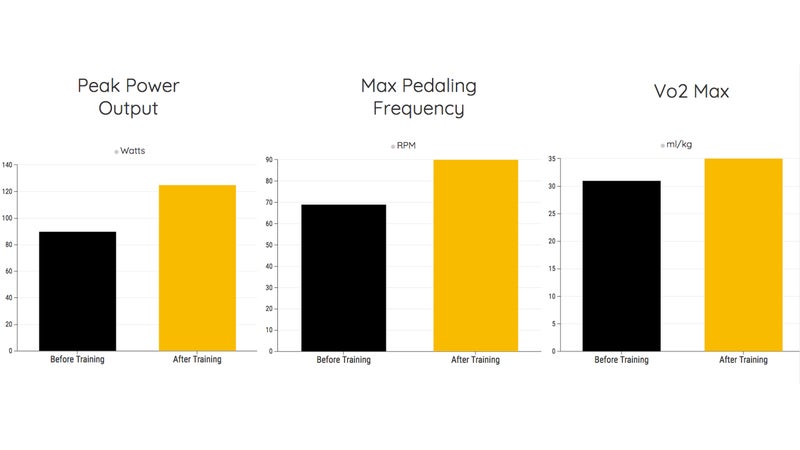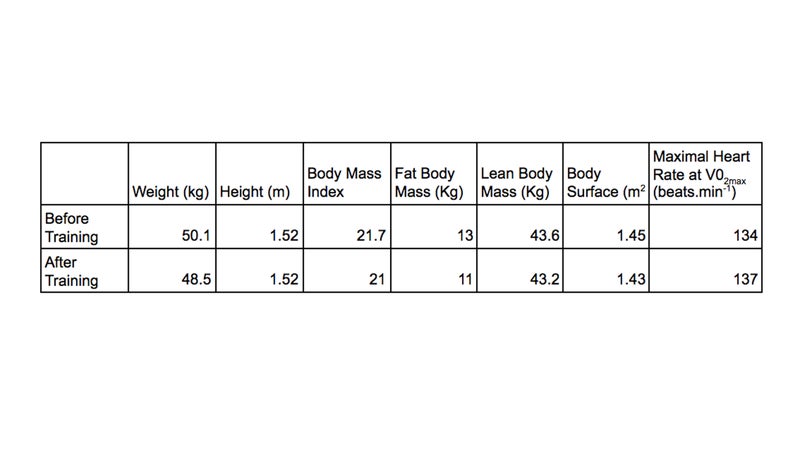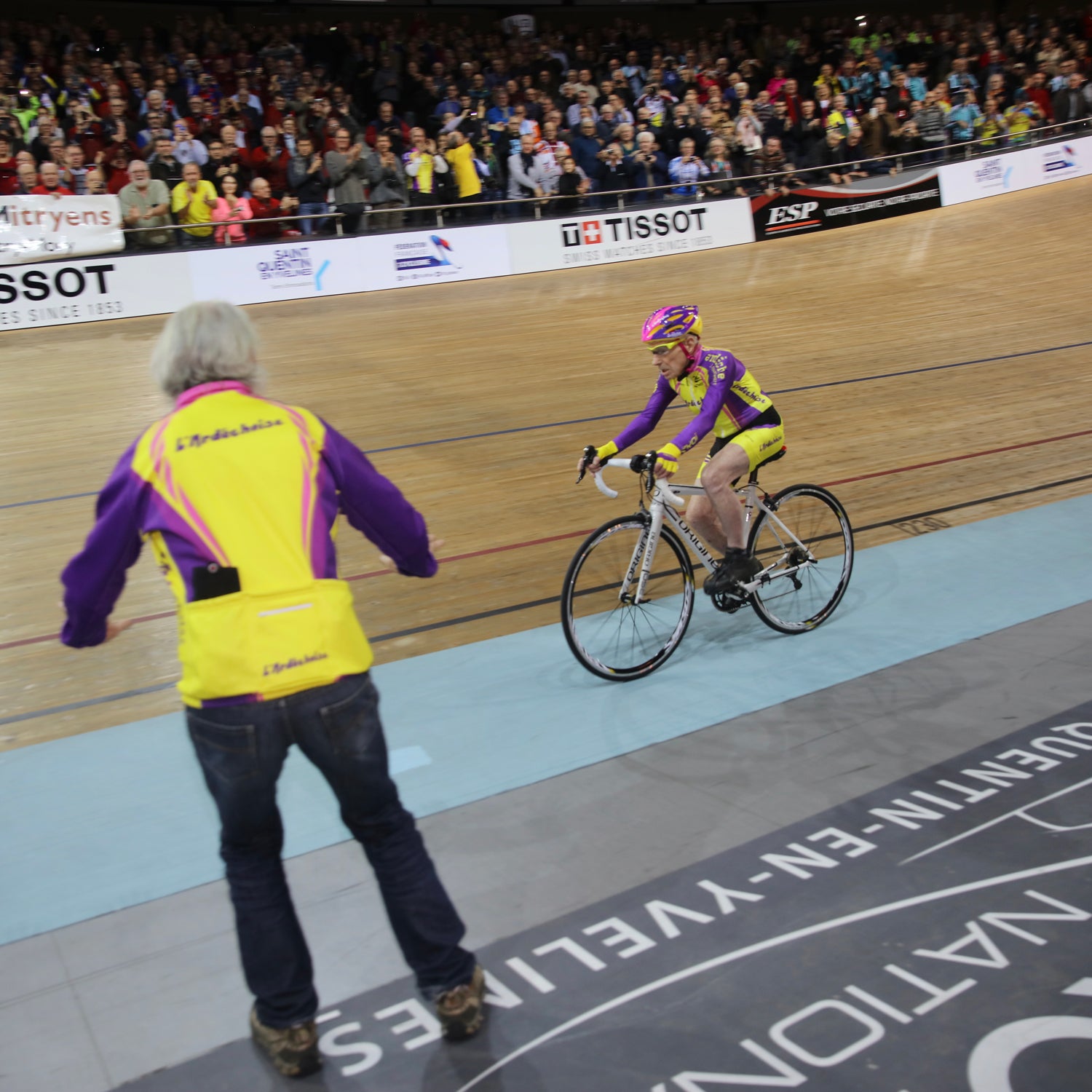In 2014, a then 103-year-old Frenchmen and former wine dealer named : he cycled 26.92 kilometers (16.7 miles) in one hour, the farthest anyone over 100 has gone. In doing so, he broke his own record that he had set two years prior as a 101-year-old, when he cycled 24.25km (15.1 miles) in one hour. In between his two record attempts, Marchand volunteered to have his body studied and monitored by researchers from the University of Evry-Val d'Essonne in France.╠ř
The , published in the Journal of Applied Physiology last December, shed light on a fascinating and infrequently studied area of human performance: .╠ř
ÔÇťAlmost all humans respond to training,ÔÇŁ says , a physiologist at the Mayo Clinic who studies how humans react to physical and mental stress during exercise. Marchand╠řhad a lot going for himÔÇöpreviously good health, a solid support team, and a structured fitness program that was tailored to his ability level. “Marchand shows that theoretically that thereÔÇÖs no upper age limits to training,” says Joyner. In other words, anyone at any age who's willing to work hard will see results.
Scientists tracked everything from his VO2 max and peak power output to max heart rate and body mass. Here are the most interesting takeaways.
His VO2 Max╠řIncreased by 13 Percent
VO2 max is a measurement that tells you how much oxygen your body is able to take in and use at maximum exertion. During the two years between records, ▓Đ▓╣░¨│Ž│ˇ▓╣▓ď╗ňÔÇÖs rose from 31 ml/kg to 35 ml/kgÔÇöan increase of 13 percent.╠řMarchand is something of a phenomenon╠ř(he nearly became a professional cyclist as a young man, and when he picked the sport back up at age 67, he would regularly go on extremely long rides, including one from Paris to Moscow) and his VO2 max numbers are expectedly╠řastoundingÔÇöequivalent to those of a fit 42- to╠ř61-year-old man. (For context:╠řtop endurance athleteÔÇÖs typically have╠ř╠ř80ml/kg during their prime.)
▓Đ▓╣░¨│Ž│ˇ▓╣▓ď╗ňÔÇÖs training showed that it is possible for people to improve the health of their lungs and heart and reverse or stall the normal downward trend of VO2 max. ╠ř
In part because Marchand adapted his body to be able to consume and use more oxygen, that also enabled him to output more energy.╠ř

Peak Power Output Increased by 39 Percent
▓Đ▓╣░¨│Ž│ˇ▓╣▓ď╗ňÔÇÖs increased from 90 watts╠řto 125 watts╠řfrom one record to the next. His cadence increased from 69 rotations per minute╠řto 90. ThatÔÇÖs a 30 percent increase between the ages of 101 and 103.╠ř
In the two years between records, Marchand biked a total of 10,000 kilometers. His training consisted of regular intervalsÔÇö80╠řpercent of his total mileage was done╠řat “light RPE,” or rate of perceived exertion, according to the scientists, and╠ř20 percent was done╠řat ÔÇťhard╠řRPE”ÔÇöand small daily exercises, .
He Stuck to╠řa╠řHealthy, Balanced Diet
In several interviews since setting his record,╠řMarchand has attributed a lot of his success to his diet, which primarily consists of╠řyogurt, plenty of fruits and╠řvegetables, bread,╠řand half-a-glass of red wine a day.╠ř“I've done sport all my life, eaten loads of fruit and vegetables, not too much coffee,” he .╠ř
╠ř,╠řMarchand has never eaten much meat for ethical reasons, but, at╠řthe request of his doctors, he did being eating╠řmeat more regularly during training╠řto build muscle.
His Weight and Heart Rate Stayed the Same

▓Đ▓╣░¨│Ž│ˇ▓╣▓ď╗ňÔÇÖs lean body mass and maximum heart rate╠řdidnÔÇÖt undergo significant changes during the two years of training, and itÔÇÖs not immediately clear to scientists why.╠řWhile he was eating more meat to build muscle,╠řhe did end up shedding a few pounds, which could contribute to his improved VO2 max (since the measure is a ratio that includes bodyweight).
╠ř
Marchand has shown that , such as .╠řHeÔÇÖs a phenomenon╠řin the sense that heÔÇÖs been focused on exercise for so long and still has the gumption to ride over 3,000 miles a year. Yet,╠řÔÇťwhat this shows is that aging is inevitable, but people with regular levels of physical activity, some of it at higher intensity, can theoretically extend their life span,ÔÇŁ says Joyner. The study went so far as to say that these improvements are ÔÇťadding life to the life, rather than searching to kill the death.ÔÇŁ
It doesn't seem like MarchandÔÇöwho, just last╠řmonth, biked 14 miles in an hour and in╠řthe over-105 classÔÇöhas any intention of slowing down.


